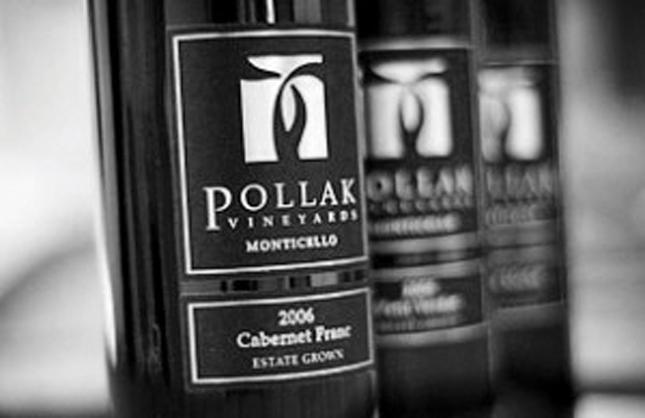For any industry to thrive, there must be infrastructure in place to support its maintenance and development. In the case of East Coast wine, an increasing number of educational outlets, quality control organizations, and winemakers’ consortiums are all valuable resources helping to bolster this quickly growing industry. There are many kinks to work out, however, if states like Virginia, Maryland and Pennsylvania hope to achieve as established a wine reputation as their West Coast counterparts.
Laws surrounding the production and sale of alcohol vary sometimes from county to county, and their complexities often prevent smaller start-up wineries from being able expand.
Pennsylvania’s Liquor Control Board is particularly archaic in its policies towards independent winery owners, often hampering the efforts of the ideal small business entrepreneur in a bourgeoning industry poised to bring revenue, employment, and tourism to a state in economic downturn. If anyone is wondering why people keep drinking California wines, I might point out a bill recently passed there setting aside $53 million dollars to further promote wineries, despite the state’s virtual bankruptcy. Although this sum seems a bit excessive, it is an example of how other American wine regions have benefited from the support of state institutions.
In Virginia, however, legislators have steadily begun to reform various agricultural and beverage control regulations to be more conducive to the wine industry. Simultaneously, Virginia Tech is on the brink of extending its viticultural degree to include an online program, making a quality wine education available to many more potential winemakers. In addition, Virginia’s wineries continue to find new ways to work together to evaluate and improve the quality of their products.
Virginia is now organized into six official AVA’s (American Viticultural Areas), a notable move towards industry coordination and quality control. This system of “appellations” is taken for granted in Europe, where strict regulations often dictate which varietals may be planted and how they are to be grown. There is much more freedom in the “New World,” but by grouping together certain areas with similar soil, elevation, climate, etc.— terroir, as they say in French—wineries can more effectively work together to develop the common characteristics that make their product stand out.
The majority of vines grown in Virginia are made up the world’s most popular grapes: Merlot, Cabernet Sauvignon, Chardonnay. In the past few years, however, some producers have built their reputation around varietals that they believe will set their region apart. In the Monticello AVA, for example, Barboursville Vineyards is thinking outside of the box. Set on the grounds of the beautiful Barbour Estate designed by Thomas Jefferson, Barboursville has planted Italian grapes such as Barbera and Nebbiolo, originally from the noble Piedmont region of Italy.
Though maybe not as deeply complex as some of the Italian versions, the relatively young Virginia vines result in well made, balanced, and elegant wines. Most importantly, they push forward the frontier, employing the kind of experimentation that leads to revolutionary discoveries. Also make sure not to miss their delectable Malvaxia dessert wine.
While Charlottesville has the hotter growing season mimicking that of Italy or Bordeaux, the gentle hills of Northern Virginia are cranking out some spectacular vintages of grapes that can benefit from its cooler climate and continental breeze, such as Viognier and Cabernet Franc. I was impressed with the soft fruit and spicy finish of Breaux Vineyards’ 2006 “Lafayette” Cabernet Franc, as well as the well-structured 2009 vintage from year-old Paradise Springs Winery, currently building a new tasting room and winery facility in Clifton.
Surprisingly successful in multiple regions, Virginia’s Petit Verdot has been gaining notice from many national critics. Petit Verdot is poised to be to Virginia what Malbec is to Argentina. Both Petit Verdot and Malbec were originially used only for blending in the “Old World,” but have taken to their respective soils to produce some impressive and complex single-varietal wines. With common traits often more subtle and earthy than the bold fruit and classic flavors of other East Coast reds, Petit Verdot may be an acquired taste for some wine drinkers; but as wine and food culture continue to blossom in the Mid-Atlantic metropolitan areas, customers continue to expand their palates with a wider range of varietals, cultivating an appreciation for the vastness of style.
As more wineries continue to pop up throughout Virginia, it will be a challenge to maintain the quality reputation and cohesive marketing necessary to continue to advance in the global market. However, with open forums of communication within the business, and a little extra effort in funding and support from local customers and government institutions, the perception of Virginia wine will be no different from any other respected region in the world.
Sip of the Day
Pollack Vineyards 2008 Petit Verdot
This wine is full of soft black fruits and rich earthy notes of bramble and spice. While some Petit Verdots ere on the side of harshness, Pollack’s effort displays soft tannins and a smooth finish as a result of careful handling and minimal barrel aging in 100% French oak. Let it aerate a bit before drinking and pair with a flavorful red meat such as leg of lamb.
Caroline Jackson is the Assistant Winemaker at Blair Vineyards in Eastern Pennsylvania. She has a degree in English and a background in wine retail. Visit her blog, Sips and Sounds, which pairs daily music selections with a wine or craft beer.


